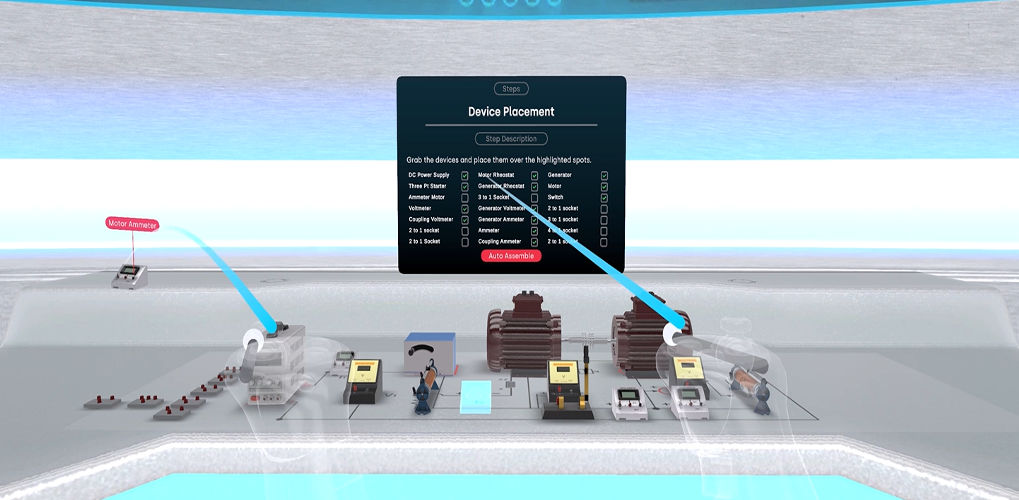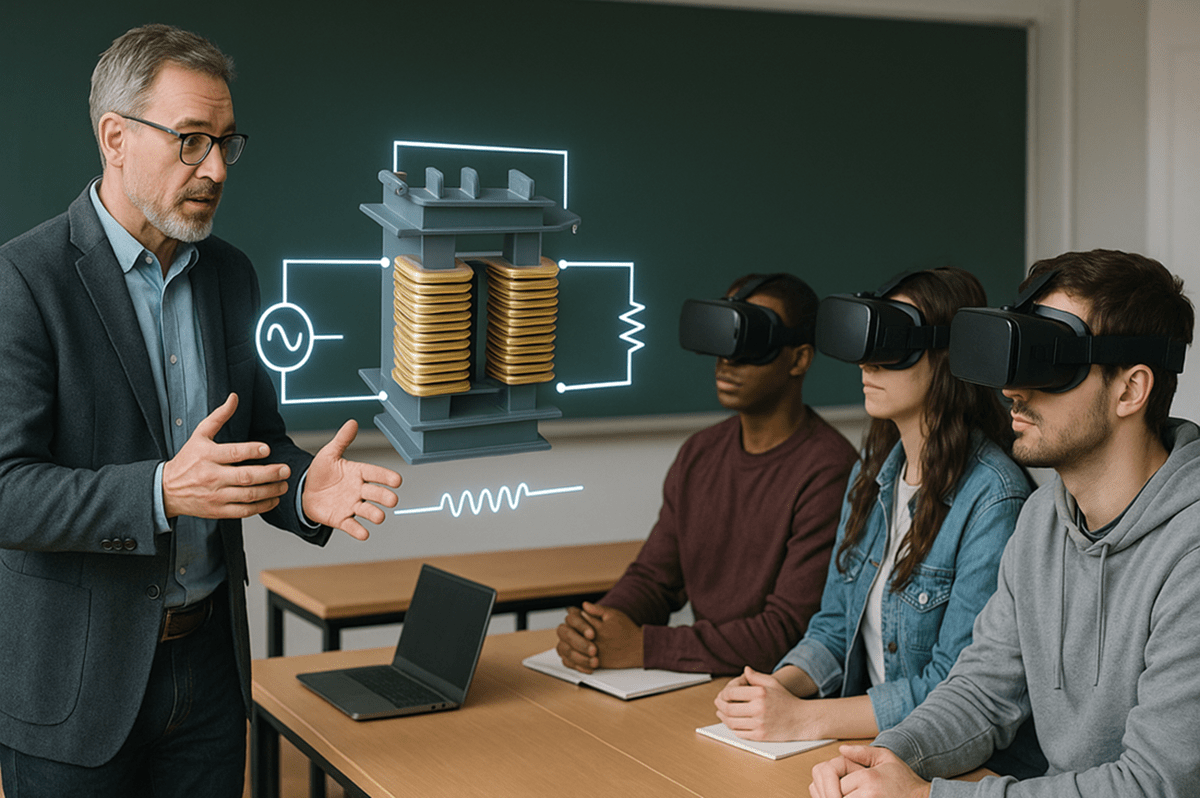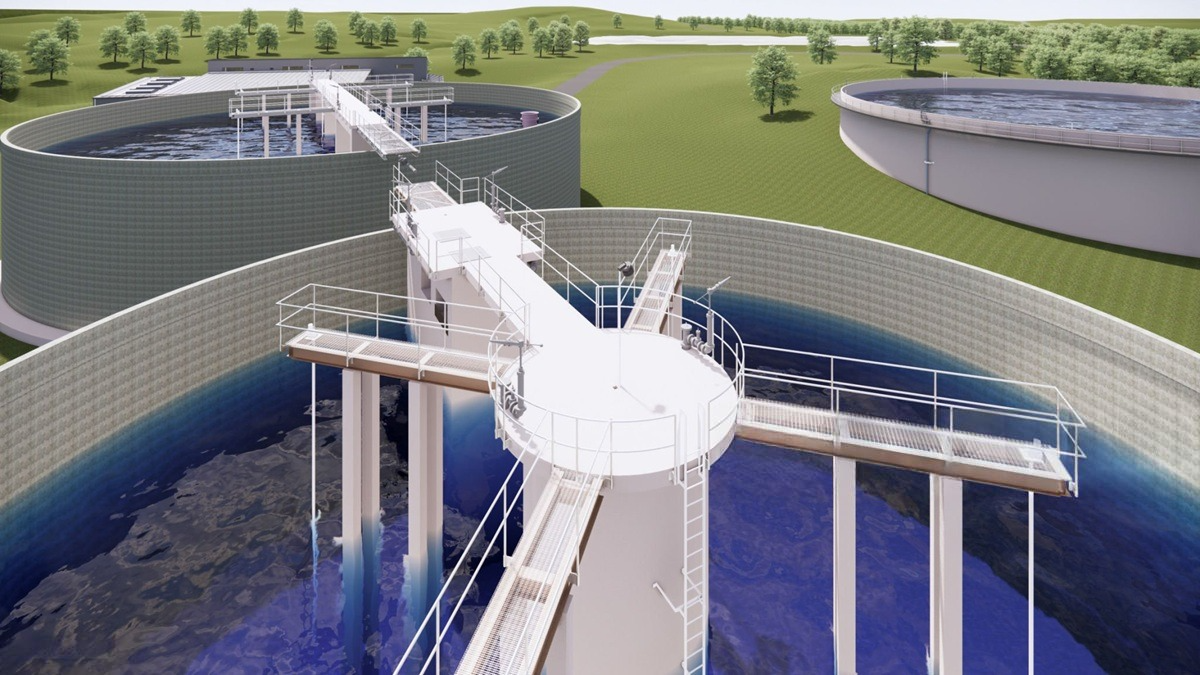How Swinburne's Test Experiment in VR Enhances Circuit Understanding

According to the pillars of Education 4.0, “active learning” should be an important part of any educational curriculum as it increases the passing rate by 45%.
In a discipline like electrical engineering, it is more than important to visualise the crucial concepts like circuit diagrams, waveforms and logic gate truth tables to gain a proper understanding.
An anonymous survey conducted at the University of Michigan reinforced this very statement by showing that 90% of students being taught with the aid of VR circuit labs exhibit higher engagement levels.
Swinburne's Test Experiment is a paradigm shift, using virtual reality (VR) to essentially turn circuit analysis on its head.
This pioneering technique not only provides ease of access to learning and involvement but also enables students to investigate complicated circuit behaviours in a secure and controlled setting.
In this blog, we will see how implementing VR for electrical engineering in the realms of the Swinburne’s experiment is making life easier for the educators today.
Swinburne's Test Experiment: A Paradigm Shift in Circuit Understanding
As has been mentioned in the electrical engineering curriculum, there is a need to understand and analyse circuits. Although valuable, traditional laboratory methods are restricted by access, safety, and the ability to test a wide range of scenarios.
Swinburne's Test Experiment in VR provides a revolutionary solution to this; a more immersive and interactive way to understand circuits.
Swinburne's Test Experiment has been integrated into the University of California, Berkeley's undergraduate electrical engineering course, where students have plenty of opportunities for hands-on experimentation and problem-solving.
These include designing and manipulating interactive circuits, troubleshooting in real time and collaborative projects.
➡Virtual circuit labs: The power
The idea of virtual circuit labs is at the heart of Swinburne's Test Experiment. By replicating real-world laboratory setups, these digital environments permit students to experiment with various components, measure parameters, and analyse the circuit behaviour.
VR labs eliminate the physical constraints of traditional electrical engineering labs like safety risks, space constraints and lack of necessary equipment.
Virtual circuit labs give the students a chance to explore complex circuits in a safe and controlled environment and deepen their understanding of the working principles of such complex circuits.
Researchers at Stanford University used VR to investigate the cognitive processes in circuit analysis, like analysis, synthesis and generalisation.
They also observed what students learn and how they develop problem-solving skills using VR in Swinburne’s test experiment.
➡Realistic circuit simulation
Another big advantage of Swinburne's Test Experiment is its ability to simulate circuit behaviour with great accuracy.
The VR platform can simulate the behaviour of resistors, capacitors, inductors, and transistors in various conditions by using advanced simulation algorithms.
The realism of these circuits allows students to observe how circuits react to changes in parameters, troubleshoot problems, and to develop problem-solving skills.
According to the Journal of Engineering Education, students who used VR-based circuit labs showed a 25% greater understanding of electrical concepts like DC generator alternator in VR.
It shows how VR can improve learning outcomes with the help of machine simulations.
It is based on the theory of multiple intelligence”, which was popularised by leading educationists like Howard Gardner. It states that a child can be more receptive to a particular mode of acquiring knowledge.
VR provides all the modes to a learner all at once- auditory, bodily-kinesthetic, visual, interpersonal, et al.
SInce the child is fully immersed in the learning environment, they can retain the subject matter better.
➡Interactive Circuit Analysis
The interactive tools for circuit analysis provided by Swinburne's Test Experiment take this further than just simulation. Virtual multimeters, oscilloscopes, and other instruments are used to measure voltage, current, power, and other electrical quantities by students.
Through this hands-on approach, this class enables students to better understand circuit concepts, and reinforce theoretical knowledge with practical experience.
Over 90% of educators who used interactive technologies in classroom settings had amazing learning outcomes.
MIT uses VR to train students in troubleshooting complex circuits by simulating real-world scenarios (like faulty circuits and complex systems) they may face in their professional careers.

The Benefits of Swinburne's Test Experiment
Swinburne's Test Experiment has many benefits. Here are some key advantages:
Enhanced Engagement: VR is immersive so students can be captured and the learning is enjoyable. For example, teaching about MCCB circuit breakers in traditional classroom settings can be tedious. However, when students interact with a MCCB circuit breaker in VR, they will enjoy the learning process by interacting with the components.
Increased Accessibility: Students who have difficulty in traditional laboratory settings can be introduced to circuit analysis with VR.
Reduced Costs: Virtual circuit labs can do away with expensive laboratory equipment and lower operational costs.
Summing up the key takeaways from this blog-
• Virtual reality world, the medium of Swinburne's Test Experiment, has been shown to increase student engagement by as much as 90% over more traditional lab settings.
• Using VR based circuit labs, students learned 25% more electrical concepts indicating the value of immersive simulation in improving learning outcomes.
• Interactive tools, including virtual multimeters and oscilloscopes, are provided to the experiment that give students the ability to measure electrical quantities and troubleshoot circuits in a hands-on fashion, reinforcing theoretical knowledge with practical experience.
• Virtual circuit labs have the advantage of no physical constraints and safety risks of traditional labs for complex electrical concepts which are more accessible to all students and safe for experimentation.
Final words
According to a recent meta-analysis of studies on VR in education, VR has been found to increase knowledge retention by 15%.
This indicates that VR-based learning can have a lasting effect on student learning.
Swinburne's Test Experiment is an important step forward in electrical engineering education. By making circuit simulations immersive, interactive, and realistic, VR can improve student understanding, engagement, and problem-solving skills.
As the technology in VR continues to improve we can look forward to even more exciting applications for electrical engineering education.


.png)
.png)

.png)